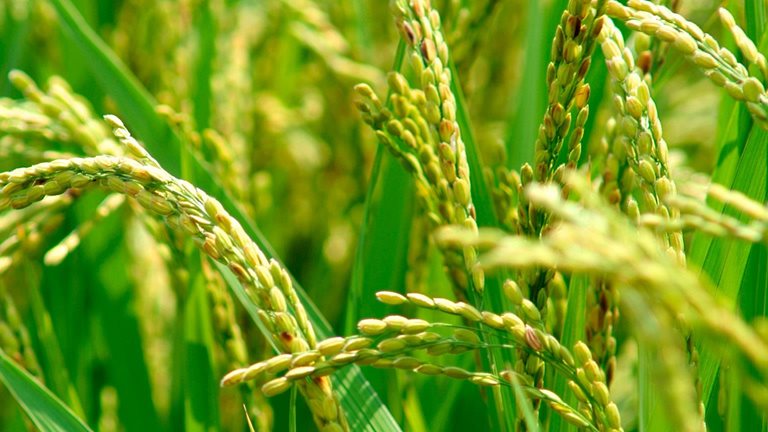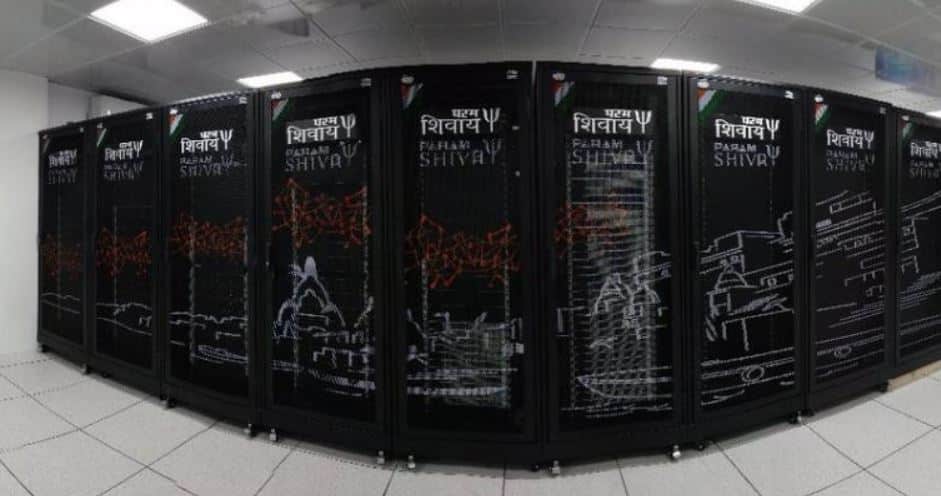Table of Contents
Global Warming Introduction
Lot of discussions and deliberations are taking place across the globe on the issue of global warming and its long term consequences on climate changes. Global warming is a phenomenon of disastrous consequences. From the last 2–3 decades, entire world has been talking about global warming but the global effort to check this phenomenon is still preliminary and inadequate. Greater evaporation, untimely melting of ice caps, sea level changes, coastal inundation, etc., have been reported. As revealed by U.S. Satellite, 125 Siberian lakes have been disappeared and two large lakes have shrunk. The chain of events caused by global warming has impact on world economy and the developing countries like India are worst affected.
The green house effect
Earth absorbs incoming solar radiation and then tries to cool by emitting long wavelength infrared radiation. The radiation is absorbed by green house gases and hence they cannot escape. The net effect should be to increase mean annual temperature.
Some of the important Green house gases
- CO2 – Burning of carbon based fuels
- CH4 – Anaerobic bacteria in rice field, cows, sewage (4 – 9%)
- N2O – Fossil fuel and fertilizer
- CFCs – Refrigeration and spray cans
- Ozone (O3) – 3 – 7%
Green house gases are absorbed by infrared radiation, which in turn much of the energy is re-radiated to the surface and lower temperature. The mechanism is named after the effect of solar radiation passing through glass and warming a green house. It retains heat and fundamentally by reducing air flow, isolating the warm air inside the structure so that heat is not last by convection.
Joseph Fourier, a French mathematician discovered the green house effect in 1824, first reliably experimented on by Irish physicist John Tyndall in 1858 and first reported quantitatively by Swedish scientist Steve Arrhenius in 1896. In the atmospheric green house effect, sunlight encounter forests, grasslands, ocean surfaces, ice caps, deserts and cities all absorb, reflect and radiate radiation differently. Sunlight falling on a white glacier strongly reflect back into space resulting in minimal heating of surface and lower temperature. Sunlight falling on a desert soil is strongly absorbed and contributes significantly the heating of the surface and lower atmosphere. Cloud cover also affects green house warming by both reducing the amount of solar energy reaching the earth’s surface and by reducing the amount of radiation energy emitted into space.
Real green houses | UPSC – IAS
Green house gases
Green houses effect are named analogy to ‘Green house’. The major difference between green house effect and green houses is that the heat retained are different and both limit the rate of thermal energy flowing out of the system. Through convection i.e., sensible heat support, the absorbed heat is not allowed to leave the green house. Green house gases absorb the outgoing radiative energy and green house gases affect the heat of earth and reemit some of it back towards earth.
The green house is built by means of glass or plastic which allows the sun light to pass through it. Primarily the sunlight heats the ground surface inside which then warms the air in the green house. The air within the green house continues to heat since it is confined within the green house and in the atmosphere, warm air near the surface rises and mixes with the cool air aloft. This can be demonstrated by opening a small window near roof of green house, the temperature will drop considerably. Thus, green house work primarily by preventing convective cooling. In the green house effect, rather than retaining (sensible) heat by physically preventing movement of the air, green house gases act to warm the earth by re-radiating some of the energy back towards the surface.
Green house effect is brought about by several gases and these gases namely Carbon dioxide (CO2), Methane (CH4), Nitrous Oxide ( ), Chlorofluorocarbons (CFxCLx) and tropospheric Ozone (O3). CO2 plays a major role and accounts for about 55% of change in the intensity of green house effect. Chlorofluorocarbons contribute 25%, 15% by Methane and 5%Nitrous oxide respectively. The role of ozone towards enhancement of green house effect is yet to be quantified. In the year 2005, the average concentration of CO2 were about 380 ppm. Prior to 1900, the CO2 concentration was about 280 ppm. Due to increased urbanization and industrialization, the CO2 concentration has enormously gone up which is entering the atmosphere. The main reason for emission of CO2 is due to burning of fossil fuel combustion for transportation, generation of electricity, space heating and cooking, deforestation and destruction of biodiversity. Emission due to fossil fuel combustion accounts for 65% extra CO2 now found in atmosphere. The remaining 35% is derived from the conversion of Prairie woodland and forested ecosystem primary into agricultural ecosystem can hold 20–100 times more CO2 per unit area then agricultural system.
Chlorofluorocarbons are artificially created are the strongest green house gases. These gases are also known to make holes in the ozone layer which has far reaching effect on the human beings. General decline in global stratospheric ozone levels over the last two decades has caused many nations to cut back on their production and use of these chemicals. As per the Montreal Protocol Agreement by forty six nations established a pact and immediate time table for the reduction of chlorofluorocarbons production and use.
The average of concentration N2O is increasing 0.2–0.3% per year. The important reasons for the increase is due to biomass burning, land-use conversion, fossil fuel combustion and soil fertigation. Nitrous oxide is also produced due to conversion of Savanna and grassland ecosystem to agriculture field. These processes reduce the amount of nitrogen stored in living vegetation through decomposition of organic matter. When biomass and fossil fuels are burnt, Nitrous oxide is released into the atmosphere. Extensive usage of nitrate and ammonium fertilizers to enhance the growth is another source of nitrous oxide.
It is difficult to determine the role of ozone in the atmosphere. Concentration of ozone gas are found in two different regions of earth’s atmosphere. Majority of ozone (about 97%) found in the atmosphere is localized in stratosphere at an altitude of 15–55 kms above the earth’s surface. Of late, the concentration of the stratospheric ozone has been decreasing because of the buildup of chlorofluorocarbons in the atmosphere. Since the late 1970s, scientists have discussed that total column ozone present over Antarctica in the spring time have decreased as much as 70%. Ozone is highly concentrated at the earth’s surface and most of this ozone is created as an artificial byproduct of photochemical smog.
Green concentration that is different concentration of the green house gasses are given here Green house gas Conc. 1750 Conc. 2003 Percent change Carbon dioxide 280 ppm 376 ppm 34 % Methane 0.71 ppm 1.79 ppm 152 % Nitrous oxide 270 ppb 319 ppb 18 % CFC 0 880 ppt Not applicable Ozone Unknown Varies with latitude and altitude
Basic mechanism of solar radiation
Most of the radiant energy from the Sun is concentrated in the visible and near visible part of the spectrum. Visible light which represents 43% of the total radiant energy emitted lies between 400–700 nm of the narrow band of visible light. Wavelength shorter than the visible account for 7–8% of the total, but are extremely important because of their high energy per photon. Shorter the wavelength of light more energy it contains. The ultraviolet light is more energetic. The remaining 49– 50% of radiant light is spread over the wavelength longer than those of visible light. Most of the thermal radiation is absorbed by the atmosphere and re-radiated both upwards and downwards; that radiated downwards is absorbed by the earth’s surface. This trapping of long wavelength thermal radiation leads to a higher equilibrium temperature.
The incoming radiation from the Sun is mostly in the form of visible light and nearby wave lengths largely in the range of 0.2–4 mm corresponding to the Sun’s relative temperature of 6000 K. Half of the radiation is in the ‘visible’ light to which our eyes are adapted.
- Earth’s surface absorbs 50% of Sun’s energy and rest is reflected or absorbed by the atmosphere.
- The absorbed energy warm the surface and surface of the earth is warmed to a temperature around 255 K, radiates long wave length, infrared heat in the range 4– 100mm. At these wave lengths, green house gases are transparent to incoming solar radiation and are more absorbent. Increasing the concentration of gases increases the amount of absorption and re-radiation thereby further warms the layers and ultimately the surface below.
Projected effects due to global warming in India | UPSC – IAS
Several effects of global warming, including steady sea level rise, increased cyclonic activity, changes in ambient temperature and precipitation patterns have affected or are projected to affect the sub continent. Projected global average surface warming result in temperature increases world-wide at the end of 21st century ranges from 0.6 to 4oC.
- Rise in sea level: At the end of 21st century there is considerable increase in sea level from 0.18 to 0.59m which results in the submerging of several low-lying islands in the suburbans displacing thousands of people.
- Economic: Indira Gandhi Institute of Development Research reported that climate related factors could cause India’s GDP to decline by up to 9% and because of this reason would result in shifting growing seasons for major crops such as rice, production of which could fall by 40%. About seven million people will be displaced due to submersion of parts of Mumbai and Chennai, if global temperature were to rise by a mere 2Oc.
- Environmental: Landslides and flooding are projected have an impact on states such as Assam. Ecological disasters, such as coral bleaching event that killed more than 70% of corals in the reef ecosystem off Lakshadweep and the Andaman. This is brought by elevated ocean temperatures tied to global warming also projected to become increasingly common.
- Social: Climate change in India will have enormous impact on more than 400 million people because many depend on natural resources for food, shelter and income. More than 56% of people in India work in agriculture, while others earn their living in coastal areas.
- Pollution: Burning of biomass in north western India and air pollution from industrial cities in north India, often concentrate inside the Ganges basin. Black carbon and dust which are blown towards the higher altitudes by winds at southern faces of Himalayas can absorb shortwave radiation and heat the air over Tibetan plateau.
- Glaciers in India:
Glaciers acts as sensors of climate change. Out of the 3% fresh water available on the earth, 67% is stored in glaciers and ice caps. It is estimated that Himalayas alone contribute 30-40% of water to the Ganges which is particularly critical in the dry season prior to monsoon rains in India. Glaciers are the result of continuous snow fall over long period of time that compresses into large, thickened ice masses. As per the latest report provided by the Geological Survey of India, Government of India that Himalaya contains 9,575 glaciers distributed in the Jammu and Kashmir, Himachal Pradesh, Uttarakhand etc. Gangotri glacier is alone more than 30 Km long and covers an area of about 148 Sq Km. - Desert: Global warming causes higher temperatures and less rainfall overall. This problem is commonly seen in desert biomes, because the soil dries out, particularly the layer of topsoil that holds the most nutrients. This makes it easier for dust storms to sweep the nutrient-rich topsoil and carry it to other areas which will prevent plant life from thriving and disrupt the entire ecosystem. In addition to dust storms and during monsoon rainfall wash away the top soil and potentially flood the area, since the ground is so dry the water which cannot soak fast into the soil.
Havoc’s due to global warming
- Hurricanes, flood, Tsunamis and wildfires are becoming common and as a consequence of these destructive events escalate in 21st century. Due to global warming higher wind speeds are recorded so also the increased ocean temperatures.
These in turn increase the frequency of cyclones. - Alarming rise in the sea level – due to green house effect, polar ice caps are melting at a faster rate. Some experts believe that arctic could be ice-free within five years rising sea levels by several feet world wide.
- Diseases and fungi attack crops lowering the quality and production.
- Natural disasters will destroy existing crops.
- Once abundant food may disappear or become expensive.
- Human beings won’t be able to eat healthy food.
- Uncontrollable epidemics are on rise.
- United Nation projects 2.11 billion people will face severe water shortages by 2025 if the consumption continues at current rate.
- Electrical power production likely to be limited by water shortages.
- Despite energy efficiency trends, total energy consumption will rise by about 50% over the period 2005-2025.
- It is predicted that there is likelihood of 190 gigatons of green house gases into the atmosphere.
- Greenland’s coastal lands projected to rise at a rate of 2 inches/year due to melting of Greenland’s ice sheet.
Future research should aim at combating the evils of global warming to use alternative source of energy and evolving new methods to reduce pollution. Otherwise, this will take lot of toll year after year due to the incidence of incurable diseases.











